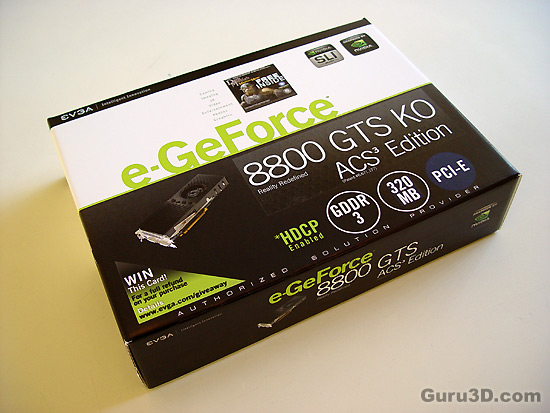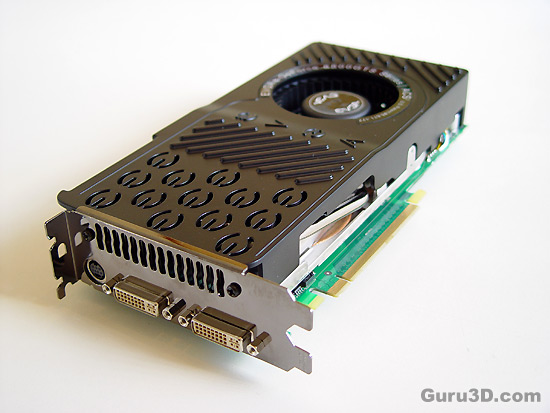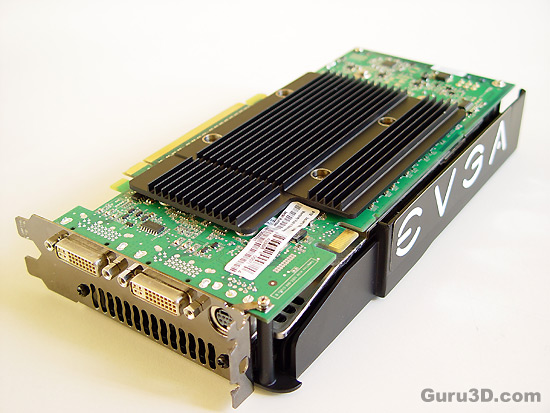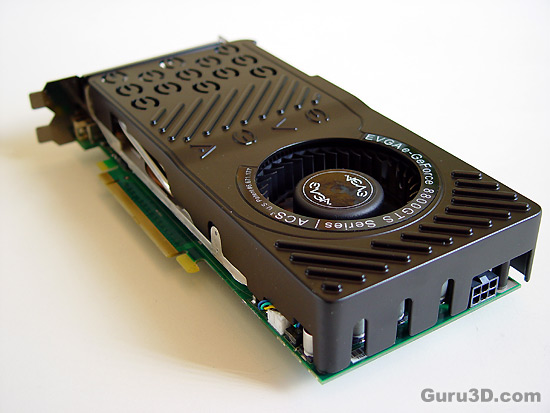Page 6
The Photo Gallery
On the next few pages we'll show you some photos. The images were taken at 2560x1920 pixels and then scaled down. The camera used was a Sony DCS-F707 5.1 MegaPixel.
The eVGA e-GeForce 8800 GTS 320 MB KO ACS³ edition.

Let's start off with the box. Obviously we include it so that you know what to look for in the stores.

Here it is, the eVGA e-GeForce 8800 GTS 320 MB KO with ACS³. It's PCB much like all models from any manufacturer are 100% similar to the reference design from NVIDIA's GeForce 8800 GTS 640 Mb model.
First thing that pops into my mind... why not a black PCB ?, it would be so much cooler to look at, in fact it would have complemented and finished the design in my opinion. Here we also see DVI connectors, dual-link DVI of course. With the 7-pin HDTV-out mini-din, a user can plug an S-video cable directly into the connector, or use a dongle for YPrPb (component) or composite outputs. The prior 9-pin HDTV-out mini-din connector required a dongle to use S-video, YPrPb and composite outputs. I think by next year we'll have one HDMI connector on there.

On the backside we see another cooling platelet slash heatsink. Everything is being done to keep the card as cool as possible to ensure a stable higher clock frequency. Notice in the upper right corner the SLI connector, one to be precise, not two as on the flagship GTX models.

Here we get a better idea of the ACS³ cooler. Now don't get fooled... this is based on the reference nVIDIA cooler. Yet with some changes. eVGA swapped out the stock aluminum heatsink for a copper one, and implemented a more full-bodied ducting system with active cooling. So when you think about it a little better; the idea behind this is to keep the entire graphics card cool, rather than just the GPU.
At the rear end we'll also stumble into the 6-pin PSU connector. In the very near future this connector is going to change to a new 8-pin model, precisely the same one that you can now already find as mainboard connector for dual-core CPUs.
